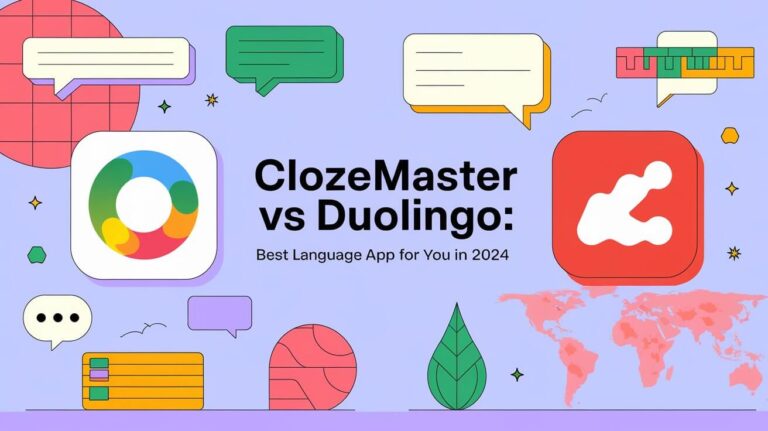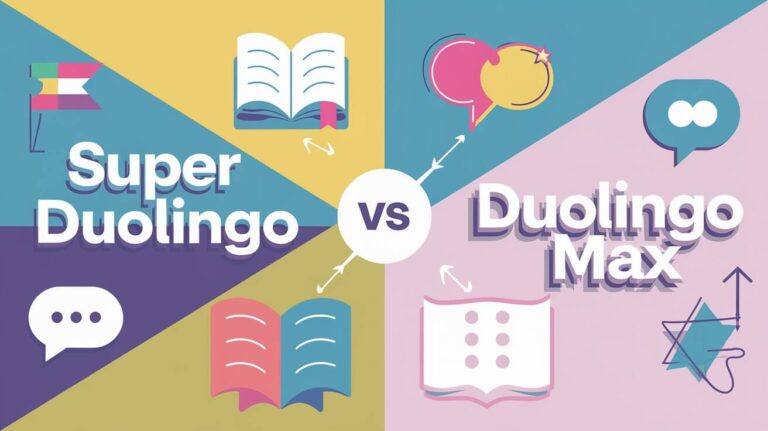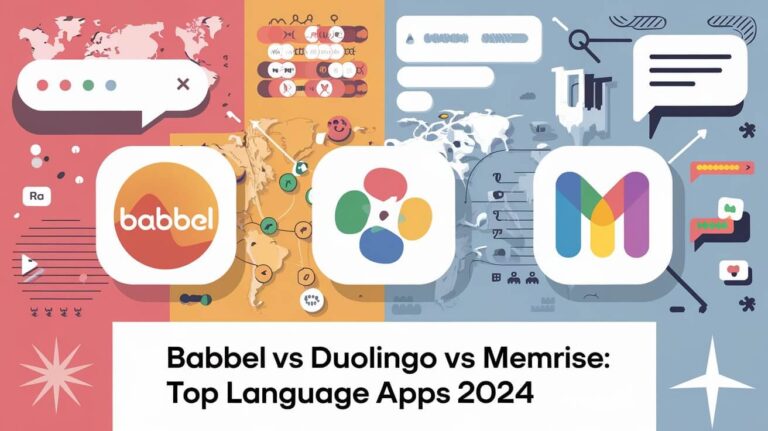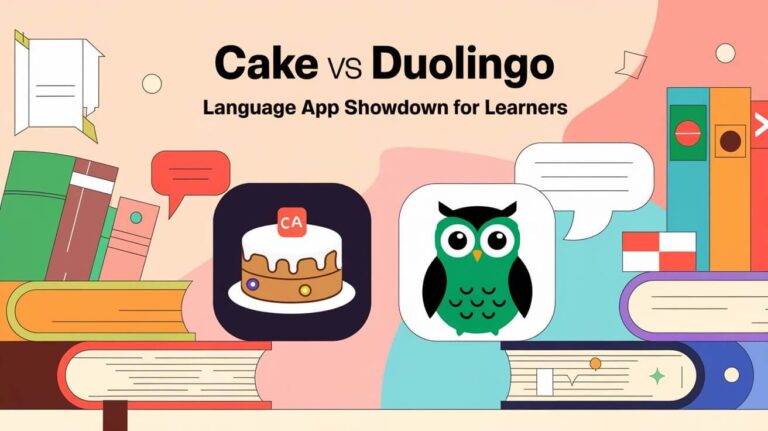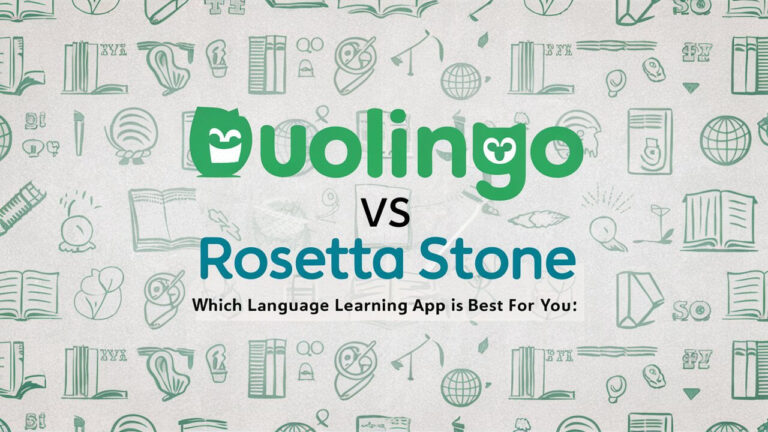Learning a new language has never been easier, thanks to mobile apps like Beelinguapp and Duolingo. Both apps offer unique approaches to language learning, with Beelinguapp focusing on reading and listening skills, while Duolingo uses gamification to teach various language aspects. This guide explores these popular apps to help you choose the best fit for your language-learning journey.
Language Learning Apps
Mobile apps have revolutionized language learning. They’ve made it possible to learn anytime, anywhere. Beelinguapp and Duolingo stand out in this crowded field. Each offers a distinct method to help you master a new language.
The Rise of Mobile Language Learning
Language learning apps have exploded in popularity. They offer convenience and flexibility that traditional methods can’t match. With just a smartphone, you can start learning a new language today.
Brief Overview of Beelinguapp and Duolingo
Beelinguapp uses a unique side-by-side text approach. It shows you stories in two languages at once. Duolingo, on the other hand, breaks language learning into bite-sized, game-like lessons.
Beelinguapp: A Deep Dive
Beelinguapp takes a different approach to language learning. It focuses on improving reading and listening skills through real-world content.
Core Features and Functionality
The app’s main feature is its parallel text display. You see the same text in two languages side by side. This helps you understand context and sentence structure. You can also listen to audio narration of the texts.
Language Options Available
Beelinguapp supports 14 languages. These include popular options like Spanish, French, and German. It also offers less common choices like Turkish and Hindi.
Learning Approach and Methodology
The app uses authentic texts to teach language. These range from news articles to fairy tales. By reading and listening to real content, you learn how the language is actually used.
User Interface and Experience
Beelinguapp’s interface is clean and intuitive. It’s easy to find texts that interest you. The side-by-side display is clear and easy to follow.
Duolingo: Exploring the Popular Choice
Duolingo is one of the most well-known language learning apps. It uses gamification to make learning fun and addictive.
Key Features and Gamification
Duolingo turns language learning into a game. You earn points, level up, and maintain streaks. This keeps you motivated to practice daily.
Language Offerings
Duolingo offers courses in over 30 languages. This includes widely spoken languages and some less common ones. You can even learn fictional languages like Klingon!
Teaching Methods and Lesson Structure
Lessons in Duolingo are short and varied. They include multiple choice questions, listening exercises, and speaking practice. The app adapts to your learning speed.
App Design and Usability
Duolingo’s design is colorful and engaging. The interface is simple to navigate. Lessons are easy to start and quick to complete.
Comparing Learning Effectiveness
Both apps can help you learn a language. But their effectiveness depends on your learning style and goals.
Vocabulary Acquisition
Duolingo introduces vocabulary through repetition and context. Beelinguapp exposes you to a wider range of words in authentic texts.
Grammar and Sentence Structure
Duolingo teaches grammar rules explicitly. Beelinguapp lets you infer grammar from context. Both approaches have their merits.
Reading Comprehension Skills
Beelinguapp excels in this area. Its focus on full texts helps develop strong reading skills. Duolingo’s bite-sized approach is less effective for extended reading.
Listening and Speaking Practice
Duolingo offers more speaking practice. It has you repeat words and phrases. Beelinguapp focuses more on listening comprehension with its audio narrations.
Pricing Models: Free vs Premium
Both apps offer free versions. But they have different approaches to premium features.
Beelinguapp’s Cost Structure
Beelinguapp offers a free version with ads and limited texts. The premium version costs $1.99 per month. It gives access to all texts and removes ads.
Duolingo’s Freemium Approach
Duolingo’s core features are free. The premium version, Duolingo Plus, costs $6.99 per month. It removes ads and allows offline access.
Value for Money Analysis
Both apps offer good value. Beelinguapp’s premium version is cheaper. But Duolingo offers more features in its free version.
User Demographics and Ideal Learners
The best app for you depends on your learning style and goals.
Who Benefits Most from Beelinguapp?
Beelinguapp is great for intermediate to advanced learners. It’s ideal for those who enjoy reading and want to improve comprehension skills.
Duolingo’s Target Audience
Duolingo works well for beginners. It’s perfect for those who want a fun, game-like learning experience. It’s also good for casual learners who want to practice in short bursts.
Suitability for Different Learning Styles
Visual learners might prefer Duolingo’s colorful interface. Beelinguapp is better for those who learn best through context and immersion.
Progress Tracking and Motivation
Staying motivated is key to language learning. Both apps have features to keep you engaged.
Beelinguapp’s Progress Monitoring
Beelinguapp tracks the texts you’ve read. It shows your progress in each story. This gives a sense of accomplishment as you complete more texts.
Duolingo’s Streak and XP System
Duolingo uses streaks to encourage daily practice. You earn XP (experience points) for completing lessons. This gamified approach can be highly motivating.
Keeping Users Engaged Long-term
Both apps use different methods to maintain engagement. Beelinguapp adds new texts regularly. Duolingo introduces new challenges and achievements.
Additional Features and Resources
Both apps offer extra features to enhance your learning experience.
Beelinguapp’s Audio and Text Library
Beelinguapp has a diverse library of texts. These include news articles, short stories, and song lyrics. The audio narration feature helps with pronunciation.
Duolingo’s Stories and Podcasts
Duolingo offers interactive stories for some languages. It also has podcasts for Spanish and French learners. These help improve listening comprehension.
Supplementary Learning Tools
Both apps offer flashcards for vocabulary review. Duolingo has a separate app for learning the alphabet in some languages.
Community and Social Aspects
Language learning can be more fun when you involve others.
Beelinguapp’s Social Features
Beelinguapp has limited social features. You can share your progress on social media. But there’s no in-app community.
Duolingo’s Leaderboards and Clubs
Duolingo has leaderboards where you compete with friends. You can also join clubs to practice with other learners.
Peer Learning Opportunities
Duolingo’s community features encourage peer learning. Beelinguapp’s approach is more solitary, focusing on individual reading.
App Performance and Technical Aspects
A smooth, reliable app experience is crucial for consistent learning.
Offline Capabilities
Both apps offer offline access in their premium versions. This allows you to learn even without an internet connection.
Device Compatibility
Beelinguapp and Duolingo are available on both iOS and Android. They work well on smartphones and tablets.
App Updates and Improvements
Both apps receive regular updates. These include bug fixes and new features. Duolingo tends to update more frequently.
Expert and User Reviews
Let’s look at what experts and users say about these apps.
Professional Assessments of Beelinguapp
Experts praise Beelinguapp’s use of authentic texts. They note its effectiveness for improving reading skills. Some criticize the limited number of languages offered.
Duolingo’s Critical Reception
Duolingo receives praise for its engaging, game-like approach. Critics point out that it may not lead to fluency on its own. However, it’s widely recognized as an excellent starting point for language learning.
User Testimonials and Ratings
Both apps have high user ratings. Users appreciate Beelinguapp’s straightforward approach to reading. Duolingo users love the app’s fun, addictive nature.
Combining Beelinguapp and Duolingo
Using both apps together can provide a more rounded learning experience.
Complementary Use of Both Apps
You could use Duolingo for daily practice and grammar. Beelinguapp can supplement this with extensive reading practice.
Creating a Balanced Learning Plan
A balanced plan might involve daily Duolingo lessons. You could then read a text on Beelinguapp a few times a week. This combines structured learning with immersive reading.
Final decision: Choosing Between Beelinguapp and Duolingo
Your choice depends on your learning goals and preferences.
Pros and Cons Summary
Beelinguapp Pros:
- Excellent for reading practice
- Exposes you to authentic texts
- Good for intermediate to advanced learners
Beelinguapp Cons:
- Limited language options
- Less structured learning path
- Fewer interactive exercises
Duolingo Pros:
- Fun, engaging interface
- Good for beginners
- Wide range of languages
Duolingo Cons:
- May not lead to fluency alone
- Less focus on extended reading
- Can feel repetitive over time
Recommendations Based on Learning Goals
For beginners or those wanting a fun, game-like experience, Duolingo is an excellent choice. If you’re past the basics and want to improve your reading skills, Beelinguapp might be better. For the most comprehensive experience, consider using both apps.
Conclusion: The Future of Mobile Language Learning
Beelinguapp and Duolingo represent two different approaches to language learning. Beelinguapp focuses on reading comprehension and exposure to authentic texts. Duolingo uses gamification to make learning fun and addictive. Both have their strengths and can be effective tools in your language learning journey.
As technology advances, we can expect these apps to evolve. They might incorporate more AI-driven personalization or virtual reality experiences. Whatever the future holds, apps like Beelinguapp and Duolingo will continue to make language learning more accessible and engaging for millions of people worldwide!



